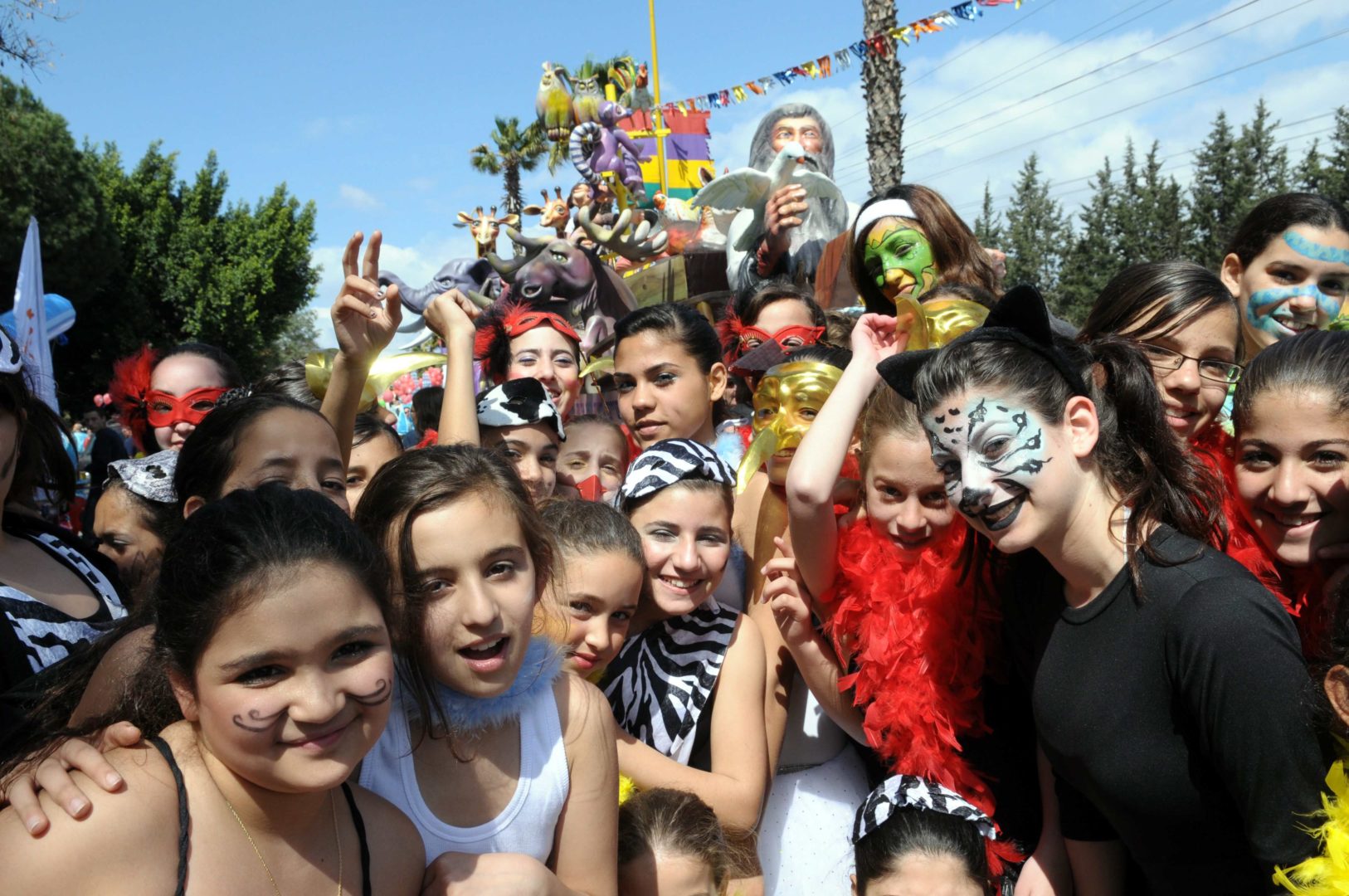In Grade 1, I came to school one day sporting a mauve pleated skirt, a bold floral patterned blouse and a matching lilac-coloured cardigan that was detailed along its collar with thick purple fur. How proud I felt to be wearing the most stylish formal wear of 2004. I strode confidently into class expecting to see my classmates equally kitted out in their special outfits for picture day.
To my horror, only T-shirts and sweatpants met my gaze. As I stood frozen in the doorway, the giant purple rose perched atop my head fell suddenly to the ground, theatrically increasing my swell of humiliation. The classroom hummed with whispers and giggles as my peers grinned and nudged their friends to take note of the striking purple spectacle standing in the doorway like an absurd carnival statue.
Needless to say, it was not picture day.
READ: PURIM VS. HALLOWEEN: THE HOLIDAY GRUDGE MATCH
I knelt quickly to retrieve my shameful accessory, leaving my dignity where it had fallen, and bolted to the bathroom where I burst into tears. It wasn’t that I was embarrassed by my outfit, although, in retrospect I should have been. Ironically, it was that, fully dressed in my audacious picture day outfit, I felt exposed, naked even. My peers’ piercing stares said: “You’re wearing the wrong thing,” and this stripped me completely. I wished deeply for a disguise, some sort of lucky cloak that would shield me from judgment.
Whether my later fetishes were caused by this incident or not, I can’t say, but subsequently I did develop a special fondness for costumes. I enjoyed making a spectacle of myself on purpose. That way, I wouldn’t do it by accident. Costumes provided a cover under which I felt happy and comfortable.
On a whim, when I was 12, my friend and I signed up to perform a bizarre comedic routine for a talent show at summer camp. As the sun went down that evening and we waited for the recital, our apprehension descended heavily upon us. We feared the stares. We feared the judgment. I fretted that I would transform back into that big purple freak as soon as I stepped onto the stage.
Attempting to alleviate our anxiety, we began playfully to apply makeup to each other’s face. At first it was just to occupy our trembling hands. But it became amusing, and we started piling on more and more: green lipstick, indigo eye shadow, auburn eyebrow pencil, bright red blush. We pinned up our hair up in preposterous Cirque du Soleil curls, and swathed ourselves in layers of outlandish neon and animal prints. When it was finally time to report on stage and perform our act, we were armoured in absurdity.
We felt that our makeup and costumes were going to protect us. Our disguises would deflect judgment away from us. We felt immunized. The daring boldness of our ensembles had seeped into our skin, and when it was time for the show, we pranced about the stage, shamelessly exposing our inner weirdness to the world. We were wearing the wrong thing and we were a spectacle, but this time, it was of our own making.
Anecdotally over time, I noticed that this magical spell cast by costumes was actually quite universal. This was always most evident on Purim.
My school was always fantastically enlivened on the holiday of Purim. Dressed up as other people and things, my classmates were always more vibrantly themselves on the 14th of Adar. The loud kids were louder, their already bold personalities further emboldened by their outfits. The quiet kids were unabashedly expressive from within the safety of their costumes as they enthusiastically contributed their voices to Havah Narishah.
My school’s Purim experience, however, went beyond lavish costumes and unparalleled energy – it was also marked by the school’s annual talent show. I had always found this vaguely paradoxical: the day on which the students were encouraged to disguise themselves was also the day on which they were invited to expose themselves on stage.
I remember watching from the audience as one soft-spoken friend of mine emerged on stage, almost unrecognizable as an oversized Teletubby, and sang an original song. I thought, how strange for her to be revealing such an intimate part of herself while concealing all the rest.
READ: SCROLLING THROUGH MEGILLAT ESTHER – SONG, TRADITION, ART & HUMOUR
I think that I now understand why my school scheduled talent shows on Purim every year, and why it is customary to disguise ourselves on the very holiday that celebrates the unmasking of our true identity.
Costumes give us the courage to express ourselves without fear of judgment. Esther, who was merely a modest villager, didn’t identify with the luxurious lifestyle of the royals. She only put on that crown to save her people from annihilation. Royalty was her costume, and only from within it was she safe to expose her true self and innermost wishes.
So on Purim, we, too, wear costumes, and, just as it was for Esther, our costumes instil in us a sense of safety to express ourselves. Purim is a commemoration of heroic actions and miraculous events that took place 2,500 years ago, but it’s also the one day a year that, as Jews, we gather with enthusiasm, dressed in ostentatious costumes, to flaunt our peoplehood. It’s a day to celebrate ourselves unapologetically, to assert our personal identities without reservation, and be proud of who we truly are.
Laura Goldfarb is a Grade 12 student at the Anne and Max Tanenbaum Community Hebrew Academy of Toronto.
